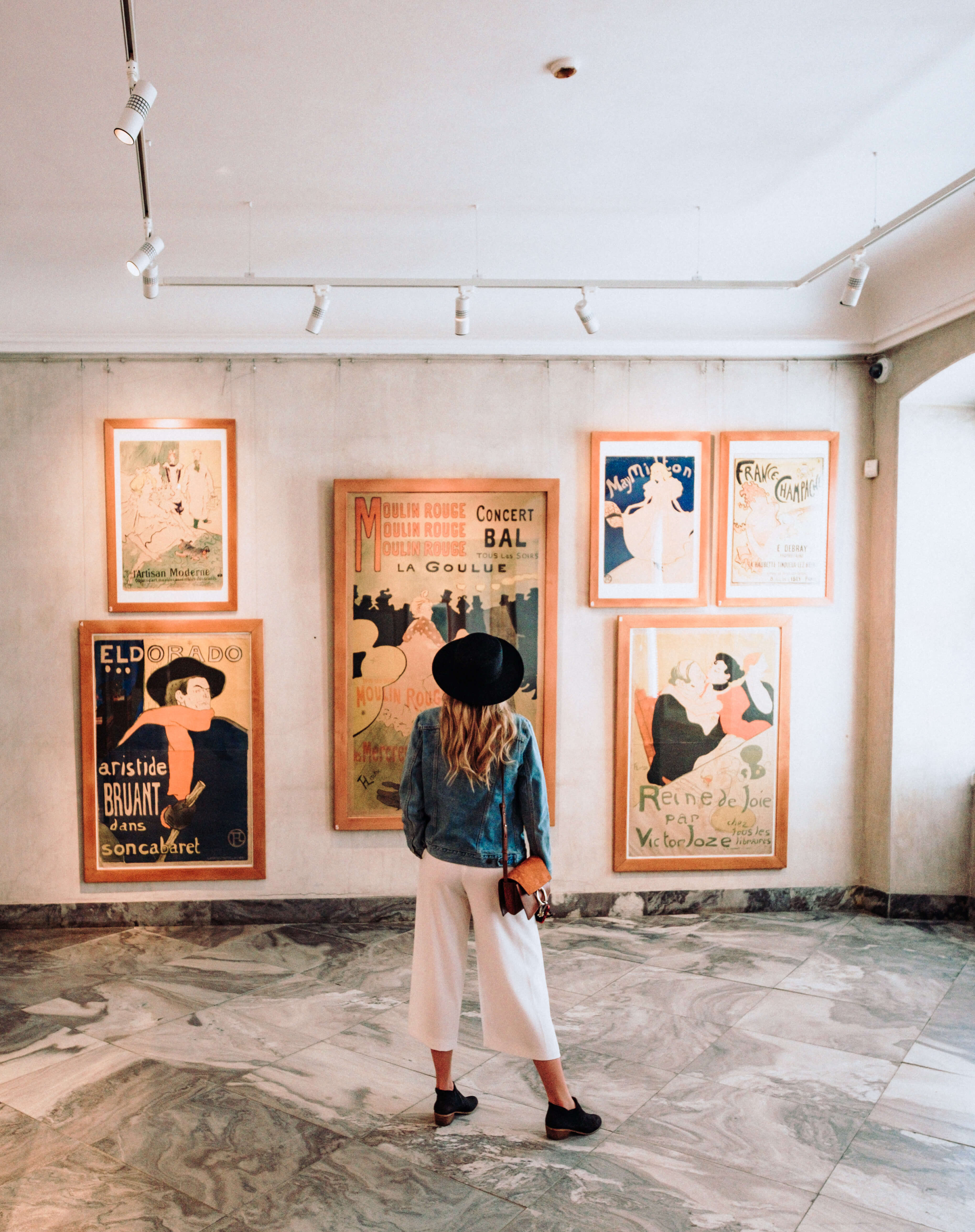Table Of Content

The museum’s main attractions are its over 100 historic buildings, each carefully transported from its original location from various regions of Denmark, the Faroe Islands, and Greenland. Known as “Denmark in a Nutshell,” the collection includes farmhouses, cottages, a school, a village shop, windmills, and even an 18th-century manor house. The museum also houses an impressive collection of Asian art and crafts, and a European Art of the 18th-century section which reflects upon the designs that influenced Danish aesthetics. These collections offer a broader context, tracing the international influences that have shaped Danish design. Another highlight is the museum’s glass-domed Winter Garden, which is filled with statues, palm trees and a fountain. These buildings represent various regional architectural styles and social classes, from the humble thatched fishermen’s huts to the grand manor houses.
Practical Information for Visiting the David Collection
Designed by the internationally renowned architectural firm OMA, DAC’s exterior is a striking blend of glass and steel, resembling a stack of blocks that house a mix of offices, residences, and public spaces. Situated in the vibrant district of Nørrebro in Copenhagen, the Workers Museum (Arbejdermuseet) offers an intriguing and essential perspective on Denmark’s social history. The museum is housed in the Workers’ Assembly Building (Arbejdernes Forsamlingsbygning), a historic venue that has served as a hub for the Danish labor movement since the late 19th century. Unlike larger, more sprawling museums, the museum’s beautiful interiors feature furniture from the homes and studios of many of the artists providing an intimate setting for art appreciation. The fulcrum of the museum’s collection is pieces from the Danish Golden Age, a period of extraordinary creative output in the 19th century. Artists like Christen Købke, Wilhelm Bendz, and Martinus Rørbye are well-represented, and their works provide fascinating insights into Danish society, culture, and landscapes of the era.
Stay in the know: Sign up for the latest hotspot news from the Nordics.
We are the gateway to design destinations in Denmark and are right around the corner from Amalienborg Castle – the home of the Danish royal family – and the cafés and restaurants at Nyhavn. Currently, designers around the world are working on solving some of our global challenges. Thinking radically and creatively, allowing themselves to be guided by both reason and emotion. They search extensively for inspiration, ask different questions, and envision themselves in the communities, whose lives they want to improve. Experience the development of Danish silver from Arts and Crafts and Art Deco to the organic shapes of Modernism up until today.
Gallery of Designing the Future of Energy: An Exhibition on Design's Role in the Matter Opens at Vitra Design Museum - 4 - ArchDaily
Gallery of Designing the Future of Energy: An Exhibition on Design's Role in the Matter Opens at Vitra Design Museum - 4.
Posted: Wed, 10 Apr 2024 10:37:08 GMT [source]
The challenges of the future
It boasts a vast collection of both Danish and European art pieces ranging from the 14th century to modern day. The architecture of the museum is also striking; the original building is over 100 years old and is connected by a glass covered street to a more modern building, making a tangible transition from old to new. If you’re into art, design, architecture and food, Copenhagen is the place for you. The city hosts numerous world-class museums ranging from prestigious institutes with large art collections to new, niche museums for installation art. In addition to the art they house, the galleries are destinations in and of themselves, complete with gorgeous architecture and top notch cafes.
Visitors Information for the Danish Design Museum

Open throughout 2024, ‘The Future is Present’ explores society's future diversity and community design, questioning human values and social behavior. It addresses designers' radical, empathetic approaches to global challenges like the climate crisis, refugee flows, surveillance, and pandemics, encouraging reflection. While not cheap, the museum’s gift shop is a good first port of call for those looking for design-focused souvenirs. Tucked behind the sprawling Statens Museum for Kunst, in pretty Østre Anlæg park, this comparatively bijou museum houses 19th- and early 20th-century Danish masterpieces that belonged to tobacco magnate Heinrich Hirschsprung. The collection includes major works by artists from the Danish Golden Age (1800–1850) and paintings by Anna Ancher, a member of the Skagen Painters colony and considered one of Denmark’s greatest artists.
Practical Information for Visiting the Hirschsprung Collection
However, the collection and displays also include major international works and older designs especially to show the influence on later developments of classical ideas. Designmuseum Danmark was founded in 1890 by the Industriforeningen i København (now Dansk Industri – The Confederation of Danish Industries) and the Ny Carlsberg Museumslegat. It first opened to the public in 1895 in a completely new museum building situated on what is now H.C. Right from the start the main purpose of the museum has been to disseminate a concept of quality within design. Through displaying the exemplary objects it was hoped to raise standards within the products of Danish industry.
You can trace Thorvaldsen’s artistic journey, starting from his early works to his late masterpieces, showcasing the evolution of his style and craftsmanship. The Winter Garden, with its towering palm trees, glass dome, and central fountain, offers a tranquil spot to pause and reflect on the artistic grandeur you’ve witnessed. The Glyptotek houses the most extensive collection of Rodin sculptures outside France, including the iconic “The Thinker” and “The Kiss”. N.B. Most of the museums in Copenhagen are closed on Monday so keep that in mind when planning your visit.
The David Collection
Of all these works, Andrea Mantegna’s Christ as the Suffering Redeemer and Lucas Cranach the Elder’s Melancholia are the standouts. You’ll find iconic pieces such as Arne Jacobsen’s Egg and Swan chairs, Poul Henningsen’s PH lamps, and Verner Panton’s futuristic designs. Tucked away in the bustling heart of Copenhagen, you’ll find the Design Museum Denmark – an institution that provides a fascinating glimpse into the principles that have made Danish design a global phenomenon. The Ny Carlsberg Glyptotek’s collection of French and Danish art from the 19th and 20th centuries is equally awe-inspiring. With a focus on French impressionists and Danish Golden Age artists, you’ll find works by masters like Monet, Renoir, Degas, Matisse, Bonnard, and Cézanne alongside renowned Danish artists like Købke and Lundbye.
Practical Information for Visiting the Danish Jewish Museum
Kunsthal Charlottenborg hosts a year-round program of rotating exhibitions, performances, concerts, lectures, and screenings, representing a wide array of artistic mediums. The center’s reputation for daring, provocative exhibits ensures there’s always something new and exciting to explore. Here, you can explore authentic, reconstructed flats from the 1910s and the 1950s century, complete with period furniture and household items. Looking at the exhibits gives you the impression you’ve stepped back in time.

If you love architecture as much as Jacky and I do, you’ll have a blast at the DAC. If you are feeling adventurous, you can even go down the DAC’s unique 40-meter, 4-story spiral slide. N.B. The Zoological Museum is presently closed as the Natural History Museum is undergoing renovation. The winding spiral staircase that leads to a walkway high above the ground, offering a unique perspective of the tropical canopy, is a popular Copenhagen Instagram location. Jason with the Golden Fleece is considered to be the artist’s first great masterpiece and remains for me the highlight of the museum.
The museum also houses a stunning collection of Danish medieval and Renaissance artifacts. The beautifully detailed church frescoes, intricately carved altarpieces, and an impressive array of medieval weaponry give a glimpse into Denmark’s religious, military, and colonial past. Copenhagen’s hippest museum is without a doubt Copenhagen Contemporary, an international art center located in the up-and-coming neighborhood of Refshaleøen in a former B&W welding hall. The museum features installation art by world-renowned artists and emerging talents in the gorgeous, high-ceiling industrial halls. Be sure to wander down the street Bredgade, a little farther northeast and home to the Design Museum.
Wearing only his warrior’s helmet, the marble statue shows Jason’s proud nonchalance as he sets off to return home with the Golden Fleece on his left arm. The son of an Icelandic wood carver, Thorvaldsen’s life represented the romanticism of the 18th and 19th centuries. Having spent the majority of his life in Rome, his work was clearly inspired by classical Greece and Rome. Two of the highlights of the SMK are Krøyer’s Boys Bathing at Skagen, Summer Evening, and Hammershøi’s Interior in Strandgade, Sunlight on the Floor. Don’t miss ‘The Chair,’ designed by Hans Wegner, which was catapulted to fame when used in the televised 1960 U.S. Presidential Debate and since then, it has become synonymous with Danish design worldwide.
We must add to this the collection of exemplary works from older “areas” and periods, which are closely related to contemporary oeuvres. Designmuseum Danmark undertakes research into the history of art and design, taking as its point of departure the museum’s own collections, and presents the results in exhibitions, publications and educational material etc. At Design Museum, visitors can explore an impressive collection inside a beautiful 18th-century Rococo building right in the city center. The permanent collection offers a look at Danish design through influential pieces, like the fun chair exhibition by famous artists and architects Arne Jacobsen, Kaare Klint and Hans Wegner. The museum has a great cafe with lunch bites (think Danish smørrebrød!), coffee and cake as well as a cute garden that’s perfect for a break from the bustle of the city. This Museum present decorative art, crafts, and industrial designs from the Western world and Asia from the late Middle Ages and up to the present.
The Danish Chair is one of the most popular sections in the permanent collection. The 18th-century Frederiks Hospital is now the outstanding Denmark Design Museum. Explore Danish history from its prehistoric past to the present day at the country’s largest museum. An exhibition on Denmark’s colonial history in the Caribbean, India, West Africa and Greenland is unmissable. The museum’s permanent and rotating exhibitions offer an expansive and diverse exploration of modern art, providing something for everyone. The Danish Design Museum in Copenhagen focuses on Danish designs of especially the 20th and 21st centuries in the fields of industrial design, furniture making, fashion, and crafts.


No comments:
Post a Comment